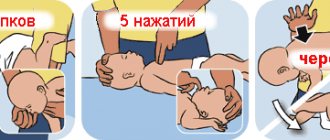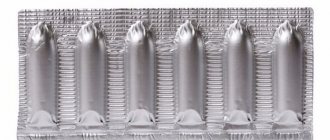Steam baths
In cases where the splinter is located superficially and is clearly visible, but it cannot be taken by the outer end to pull it out, a hot soap and soda bath will help, it is prepared as follows:
- 1 glass of hot water 55-60°C,
- 1 teaspoon of soda,
- 1 tablespoon of liquid soap.
The mixture is shaken well, a finger is dipped in there until the solution cools completely , after which the edge of the splinter will be clearly visible through the steamed and soft edges of the entrance wound, and it can be easily removed. Instead of liquid soap, it is better to use baby soap, having first cut it and melted 1 tablespoon in 50 ml of water over low heat.
How to get a splinter from a child
Pulling out a splinter from a small child with a needle and tweezers is very problematic. Only at the sight of tools does the baby begin to cry, it is difficult to hold him and a stressful situation arises.
Therefore, first you need to try less “barbaric” methods. The child needs to be calmed down, distracted, and there should be no panic in the environment. Then use painless methods, which in most cases are effective if the splinter is not deeply embedded.
Removal methods without a needle
Before removing a splinter from a finger without a needle, you first need to make a soda-salt bath, but if the child is 5 years old or older, you can persuade him to hold his finger in water for 15-20 minutes, then the small child will cry again and will not sit for the required time.
To do this, you need to pour hot water (50°C) into a bowl, dissolve soda and salt at the rate of 1 tablespoon per 1 liter, put washable toys there - animals, dolls, boats, and the baby will be happy to bathe them.
Every 5 minutes you need to gradually add hot water, the bath time is 15-25 minutes. Then gently dry the skin of the finger with a soft cloth and proceed to one of the painless methods:
- Place an adhesive plaster , tape or tape on your finger, leave it for 1-2 minutes, then remove it in the direction from the deep end of the splinter to the outer one, it goes away along with the plaster stuck to it,
- Apply a couple of drops of thick white synthetic PVA glue, holding your finger with the wound up, after the glue has completely dried, carefully pry up its end on the side opposite to the wound and quickly remove the “cake” along with the stuck splinter.
These methods are good if the edge of the spine is clearly visible and extends beyond the surface of the skin. They are also effective if the skin has several thorns, for example, from contact with a thorny plant. After such successful removal, you should not forget to treat the skin with an antiseptic solution (5% iodine tincture, Betadine, Chlorhexidine or Miramistin).
Removal method using tweezers and needle
You can pull a splinter out of a child’s finger with tweezers if its “tail” protrudes outward above the skin level. It is carefully taken with the end of tweezers, and in order not to break off its end, the jaws are not pressed too hard. Gently pull in the direction coinciding with the line of the splinter.
If the end of the foreign body cannot be picked up, you can use a needle to open the outer layer of skin above it.
To do this, the needle is placed perpendicular to the course of the splinter and the epidermis is slightly torn, after which its end is exposed, which can be carefully moved outward with the same needle and taken with tweezers, or carefully grabbed with a needle through the same hole and pulled up,
General rules for both methods of removal are compliance with basic rules of asepsis:
- Wash your hands well with soap, treat them with alcohol, miramistine or chlorhexidine,
- Treat the skin in the foreign body area with 96° alcohol or 5% iodine,
- Sterilize a needle or tweezers by heating them over a flame for a few seconds, or immersing them in a disinfectant solution (alcohol, chlorhexidine for 10 minutes),
- After removal, be sure to treat the wound with an antiseptic, and if it gapes, apply a sterile bandage.
Instead of tweezers, it is good to use a drawing pen, having first washed it with hot water and soap and sterilized it with a disinfectant solution.
How to remove a splinter from a child's heel
If a splinter gets into the heel, where the skin is thick, you should not immediately try to pull it out, because it can easily break off. You must first soften the top layer of the epidermis using a compress with soda paste. Its recipe is simple:
- 1 tablespoon of baking soda is diluted with a small amount of warm water to a paste consistency,
- Apply a thick layer to the splinter area,
- Cover with a piece of film and seal with adhesive tape for 30-40 minutes.
After removing the compress, carefully remove the paste with a swab; through the widened wound, the end of the splinter is clearly visible, by which you can pull it out of the child’s leg without pain.
Folk wisdom to help parents!
There are many recommendations for removing a foreign body from under the skin, which are rich in traditional medicine. These include the following tips:
- Banana peel. A piece of ripe banana peel is applied to the damaged area, secured with a bandage and the compress is left overnight. In the morning, the splinter will come to the surface on its own and can be easily removed.
- Aloe leaves. If you apply the pulp of a leaf of this plant to the wound for several hours, then gradually a splinter will appear from the damaged tissue. This way, you can painlessly pull it out with tweezers.
- Baking soda. This substance will help get rid of tiny and unnoticeable splinters when other methods do not help. Make a thick paste from soda and water and apply it under cling film to places where there are splinters. The skin swells and pushes the foreign body out to the surface. This is a painless but long-lasting way to remove splinters.
- Vodka and vegetable oil. Initially, oil is applied to the place where the splinter enters the body. Then place the child’s hand or foot in a warm solution of vodka and salt. In half an hour the splinter will come out.
- Birch tar. The affected area is generously lubricated with this natural substance. Cling film is applied. The tar compress is kept for 20–30 minutes. After removing the bandage, the tip of the splinter will appear above the surface of the skin and can be easily removed. Instead of tar, you can use pine resin.
- Wax strip for hair removal. This product is ideal for removing thin and numerous splinters. A wax strip is applied to the site of foreign body penetration and allowed to dry. To speed up the process, you can dry the strip with a hairdryer. Then remove the wax with a sharp movement. Splinters come out with him.
- Cottage cheese. This product can be used if you don’t have tar or Vishnevsky ointment on hand. It is applied in the form of a compress to the affected area. After some time, the fragment will appear on the surface and can be pulled out with tweezers or a needle.
- Onion. Onion pulp in the form of a lotion is applied to the damaged area for 3 hours. After this time, the splinter will appear from the wound, and it can be easily removed.
Photo gallery: folk remedies that help quickly remove a splinter
Vodka and vegetable oil help remove a splinter quickly and painlessly
If you apply the pulp of an aloe leaf to the wound for several hours, then gradually a splinter will appear from the damaged tissue
Make a thick paste from baking soda and water and apply it under cling film to places where there are splinters.
Birch tar will help you get rid of splinters in the shortest possible time.
Banana peel is applied with the pulp inside
Wax strips can be used to remove splinters
Ordinary cottage cheese in the form of a compress is applied to the affected area
Onion pulp in the form of a lotion is applied to the damaged area for 3 hours
What to do if the splinter is deeply embedded
In principle, deep splinters are a reason to urgently visit a doctor - a surgeon or traumatologist. If this is not possible in the near future, you can try to remove the splinter from the child at home using the following means:
- Apply pharmaceutical birch tar or ichthyol ointment for half an hour, then rinse with warm water, repeat the procedure several times up to 2.5-3 hours,
- Place a piece of fresh aloe leaf with the pulp to the skin, stick it with a band-aid for 2-3 hours,
- Apply a piece of fresh banana peel with the flesh to the skin to the damaged area for 30-40 minutes,
- Apply a small piece of salted lard for half an hour,
- Apply soda slurry for half an hour.
As a rule, after such procedures, the splinter moves to the surface of the skin and becomes clearly visible and accessible for removal . However, these prescriptions are given as a last resort; you should strive to show the child to the doctor as soon as possible.
Tips for removing a splinter
- It is extremely important to maintain hygiene during the procedure. It is necessary to thoroughly wash your and your child’s hands and treat them with an antiseptic. Tools must also be disinfected.
- Before removing a splinter, you should calm the child. It is better to tell him what exactly will happen now and why this is being done. This way the baby will be less nervous.
- You can turn on a fascinating cartoon or give your favorite treat while removing the splinter. And after it’s all over, it’s important to praise the child for his patience and, if possible, please him.
- After removing the splinter, you need to monitor the condition of the injured skin. If redness or swelling occurs, or pus appears, you should definitely consult a specialist - a surgeon or traumatologist.
- If this is not possible, you can use an antibiotic-based ointment - for example, Levomekol. But this is only a temporary measure, and it does not replace medical care.
Required Tools
To effectively remove a splinter, you will need the following items:
- tweezers;
- needle;
- hydrogen peroxide;
- alcohol / iodine / brilliant green;
- sterile cotton wool;
- bactericidal adhesive plaster;
- magnifying glass
Prepare everything to remove the splinter
Preparatory procedures
If a child has a splinter, the first step is to ask him not to move the injured arm or leg. Otherwise, the foreign substance may penetrate deeper under the skin or crumble. This rule especially applies to splinters on the fingers.
Then you need to examine the fragment that has gotten under the skin.
If the foreign body is small, a magnifying glass will be useful.
If the splinter is shallow and most of it is outside the skin, you can pull it out yourself.
To do this, you first need to steam the skin on the damaged area. This will relieve pain and widen the pores, which means it will be easier to remove the splinter.
Effective recipes for steam baths
- with salt and soda . Salt is an antiseptic, and soda softens the skin.
Add 1 tsp to 300 ml of hot water or chamomile decoction. soda and salt. Steam the skin until the solution has cooled (about 15 minutes).
- with baby soap . This soap soothes the skin. You can add tea tree oil for disinfection.
Grate baby soap and add 300 ml of hot water. The skin is steamed until the water cools (15-20 minutes).
The danger of metal and glass splinters
A metal splinter can be in the form of a piece of wire, a thorn, a small nail, or metal shavings. As a rule, they are clearly visible in the skin, damage blood vessels, and the wound bleeds. After following the rules of asepsis, you can try to remove the foreign body using a magnet or tweezers, if its edge can be picked up.
If you cannot remove it without effort, you should consult a doctor. It is also necessary to remember that thin small metal objects (a piece of a needle, a thin wire) can get into the vessels and migrate through the body through blood flow, posing a great threat to health.
A glass shard entering the skin is always accompanied by a small cut wound. If the fragment is clearly visible, you should first soften the skin using one of the methods listed above, and when the glass is near its surface, carefully remove it. Do not apply strong pressure on the fragment with tweezers; the glass may crumble and remain in the body. You need to take the child to a specialist.
Methods for removing a shallow splinter
Fortunately, the vast majority of splinters are superficial and can be easily removed with improvised means.
With a needle
To remove an embedded splinter correctly, you need to follow the following sequence of actions (if the splinter is located on the palm or finger, not deep under the skin):
- First of all, you need to wash your hands, tweezers and needle.
- Next, treat the damaged area and tweezers (needle) with alcohol. Instead of a sewing needle, it is better to use a sterile one from a disposable syringe.
- It is necessary to ensure good visibility: open the curtains, turn on a bright lamp, wear glasses or use a magnifying glass.
- If the splinter is covered by a layer of epidermis, it must be removed by carefully prying it with a needle so that the tip of the splinter appears above the surface.
- If the tip can be grabbed with tweezers, it is carefully pulled out. The main danger at this stage is to break off and leave part of the splinter in the tissues. If this is not noticed, which is often the case, suppuration will continue. To prevent such a situation, the splinter is removed slowly and at the same angle at which it entered the tissue.
- Once you are sure that the splinter is completely out, apply pressure to the tissue around the wound. This will release contaminated fluid (blood, lymph, pus).
- The wound should be treated with an antiseptic (hydrogen peroxide, alcohol, iodine, brilliant green). If the injury is extensive, you can apply a bandage or cover the area with a bactericidal adhesive plaster.
You should consult a doctor in the following situations: if it is impossible to open the tip of the splinter (located very deep), part of it remains in the tissue and after the procedure pain, swelling and redness of the tissue persists (there is a high probability of the inflammatory process continuing).
Soda
There are several ways to remove a splinter without a needle. They are especially important for young patients and their parents, since the very sight of a needle causes a child to go hysterical. One of them is baking soda. To do this, you need to prepare a paste-like mass by adding a little water to a quarter teaspoon of soda. The mixture is applied to the affected area and sealed with an adhesive plaster for 24 hours. After this, the tip of the splinter should appear above the skin and it can be removed with tweezers. It is allowed to re-apply soda for another 24 hours. If the splinter still cannot be grabbed and pulled out, you should consult a doctor or, in the absence of severe inflammation, try another method.
Can
The technology of placing medical cups is becoming a thing of the past today. But it is perfect for “raising” the tip of a splinter above the surface of the skin. To do this, a burning cotton wick is placed inside the jar for one second, then it is removed, and the jar is quickly applied to the affected area. A kind of vacuum forms under it, which causes the splinter to move outward. The main thing is not to overheat the edges of the jar and cause a burn. This way you can painlessly remove the splinter from the smooth surfaces of the body.
Wax or glue
Very good for superficial splinters in a child who won’t let anyone approach him with a needle. It is enough to generously lubricate the surface with PVA glue or wax. After hardening, they can be easily removed without pain. The splinter sticks and comes out of the skin.
When should you see a doctor?
Parents should know which splinters their children have and should not “tempt fate” by trying to remove them at home. Such splinters are:
- Located in the face, scalp, neck, chest, armpits and groin, mucous membranes, under the nail plate,
- Deep ones that cannot be pulled out at home,
- With bleeding from the wound,
- With symptoms of inflammation - swelling, redness,
- Glass and metal.
Also, after the first unsuccessful removal attempts, you should not continue experiments and waste time. It is especially important to pay attention to splinters of an organic nature - from fish, meat, from the ground, they are potential sources of infection with dangerous microbes.
In the evenings and weekends, you can go to the nearest trauma center, which is open 24 hours a day. In case of any type of splinter, it is imperative to show a doctor to a child who, for whatever reason, has not been vaccinated against tetanus.
In what cases is a doctor needed?
You should consult a specialist (pediatric surgeon or traumatologist) in the following cases:
- the splinter is deep under the skin, especially in the foot or under the nail;
- the foreign body could not be pulled out completely;
- the splinter has a jagged shape (for example, from a shell);
- after removing the splinter, the pain does not go away, or the skin in its place looks inflamed;
- the child has a fever;
- The child is not vaccinated against tetanus.
So, what is the algorithm for providing first aid to a child with a splinter?
- calm yourself and calm your child. A splinter is unpleasant, but not at all critical;
- tell the baby about what exactly will happen during the procedure and why it is necessary;
- treat your hands, the child’s damaged skin and the tools needed to remove the splinter with an antiseptic;
- carefully examine the splinter through a magnifying glass and understand whether it is safe to remove it at home;
- steam the skin with a bath with a solution, for example, salt and soda, for 15-20 minutes;
- choose a method for removing the splinter. The most effective, but somewhat painful method is a needle and tweezers;
- for those children who are afraid of pain, there are ways without using a needle - PVA glue, lard, adhesive plaster, aloe, ichthyol ointment;
- After removing the splinter, you should monitor the affected area for several days. In case of redness or suppuration, be sure to consult a doctor;
- If the splinter is not completely removed or is too deep, consult a doctor.
If you liked the article, please share a link to it
Possible complications
An unremoved splinter is a potential source of infection; sooner or later it can lead to the development of complications, such as:
- Suppuration, abscess,
- Subungual abscess, dangerous for bone infection and the development of osteomyelitis,
- Phlegmon,
- Erysipelas,
- Tetanus, especially from splinters caught on the street from the ground,
- Bleeding - with deep splinters made of glass, metal in areas of the body with thin skin and close proximity of blood vessels.
Any splinters that get into a child’s body can become dangerous to his health, so removing them is mandatory.
At home, you can successfully remove only those that are superficial and easily removed. If you have the slightest doubt or unsuccessful attempts, you should immediately consult a doctor.









